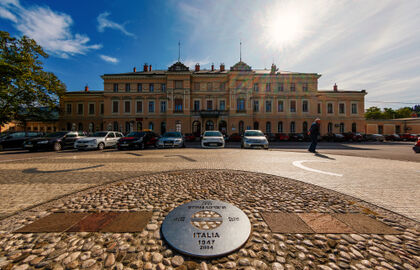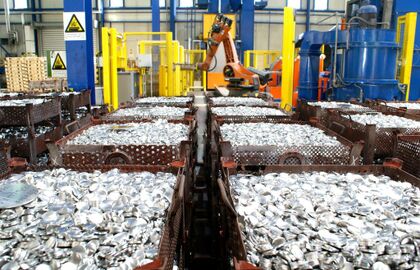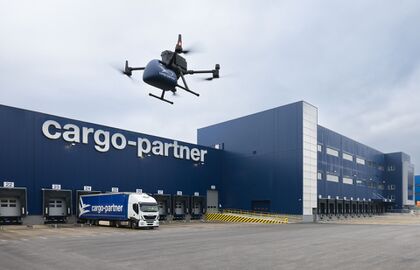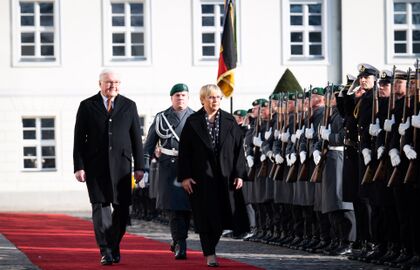Slovenia has a long trade tradition, with an export oriented economy and companies that are firmly embedded in the global supply chains.
Slovenia has a long trade tradition, with an export oriented economy and companies that are firmly embedded in the global supply chains. Its location at the crossroads of TEN-T corridors is the ideal entry point for an instant access to EU markets, CEE Europe and the South East European countries with more than 700 million customers. Slovenia also has all the attributes needed to do business across the Balkan region: knowledge of language, customs and culture, as well as personal connections.
The country's openness to foreign trade is reflected in the figures: foreign trade represents around 179 % of the country's GDP in 2022; the ratio of merchandise trade (imports and exports) to GDP is one of the highest in the region; and external trade equals nearly 148% of GDP (exports and imports combined). In 2022, the trade surplus amounted to EUR 1.3 billion.
In 2022, Slovenia managed to increase its already high export and import figures despite the situation in the markets. Exports accounted for 91 % of the country’s GDP while more than three-quarters of trade was with EU member states: 76 % of all exports and 86 % of all imports.
Slovenia’s main
exporting partners are Germany, Italy, Croatia, Austria and France. The trade with the former Yugoslav republics has been increasing since the 2000s.
Slovenia ranks 9th in terms of complexity of its economy, which indicates high sophistication of its exports, comparable to countries like Finland, US, UK and Italy.
(Atlas of Economic Complexity, 2021)
Slovenia's largest exported product groups are high and moderate complexity products that include pharmaceutical products, electrical machinery and equipment, machinery and mechanical appliances, motor vehicles and mineral fuels and oils. Slovenia’s largest exporters in 2021 were Gorenje (household appliances), Lek (pharmaceuticals), Krka (pharmaceuticals), Revoz (cars) and SIJ (steel products).
The services sector has become a much more successful part of the economy: the competitiveness of the Slovenian transport chain and the increased range of Slovenian tourist products and services have made a particularly decisive contribution to increasing services export. In 2022, Slovenia exported 11.04 billion EUR and imported 7.5 billion EUR of services.
The biggest share of imports in 2022 represented goods from the groups of pharmaceuticals, followed by mineral fuels and oils, organic chemicals, electrical machinery and equipment and road vehicles, while the majority of products were imported from Germany, Italy and Austria.
| Company | Activity | Exports | |
|---|---|---|---|
| 1 | Gorenje | household appliances | 1,971 |
| 2 | Lek | pharmaceuticals | 1,592 |
| 3 | Krka | pharmaceuticals | 1,467 |
| 4 | Revoz | cars | 1,183 |
| 5 | SIJ | steel products | 820 |
| 6 | Impol | aluminium | 800 |
| 7 | Adria Mobil | caravans and motorhomes | 538 |
| 8 | BSH | household appliances | 535 |
| 9 | Kolektor | mobility components | 351 |
| 10 | Mahle Electric Drives Slovenija | electric drives | 325 |
Trade between Slovenia and other EU member states is based on free movement of goods, without customs control, customs duties, quantitative restrictions or any other measures.
When trading with non-EU member states, Slovenia follows EU's foreign trade policy. For thorough information on the latter, see an overview:
When importing and exporting goods from and to third countries, the EU customs regulations are applied. Read the following document for detailed information on Excise and Customs Duties:
There are two VAT tax rates applied in Slovenia:
Customs collect VAT on imports into the country. Registered users of the VAT system can deduct the amount paid as the incoming VAT in their tax statement for the accounting period.
Learn more:
Slovenian companies that seek opportunities in international economic and development cooperation can benefit from a range of services provided by the Slovenian Export and Development Bank (SID Bank). SID Bank operates as a national export credit agency and provides export credits and investment insurance.





